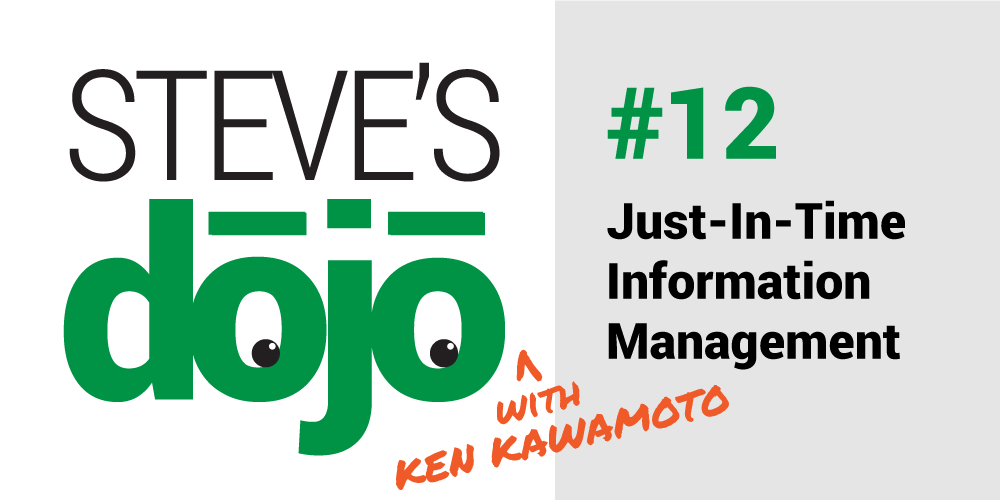hen I (Steve) chauffeur my teenage son to his many engagements, he navigates. He commonly says something like, “Turn right on 300 South then left on State and go for a while and turn right on 1700 South.” Little does he know I stopped listening after, “300 South.” Computerized navigation applications know this, which is why they state one turn at a time. They give you the next turn well before and repeat it when it’s imminent. That’s just-in-time information management and it’s a challenge in healthcare.
Question: If Apple Maps and Garmin have achieved just-in-time information management, why haven’t we in healthcare? Answer: Lots of legitimate reasons, but we’re making significant strides.
From information desert to information wetland
We have invested in EHRs, a data warehouse, and a business intelligence tool which facilitates information delivery, meaningful analyses, and scorecards to monitor hundreds of metrics. This revolution has changed the information landscape from desert to wetlands. We’ve got the water, now we’re getting better at plumbing—mastering the flow of information so bedside care providers can get the information they need without wading through a swamp. The appropriate information at the right time - this is a prime concern in nearly every discussion of analyses and scorecards.
- Just-in-time (JIT) was originally an inventory flow management strategy.
- You have JIT inventory management if your material is:
- In the right place. Preferably, within arm’s reach to minimize travel.
- At the right time. Obviously late is no good, but too early is also a problem because material can get damaged (or expire) waiting to be used. Handling material wastes time, as does working around piles of inventory.
- In the right quantity. If I need 10 widgets now, eventually I’ll need 20, but don’t bring me the extra 10 until I need them.
- Defect free. Damaged material does me no good.
From inventory to information management
The bullets for JIT material management are similar to JIT for information management, which, by the way, is Steve’s LSS practitioner phrase. Ken’s clinical decision support (CDS) phrase for the same idea is, the Five Rights of Clinical Decision Support.
AHRQ’s CDS Five Rights
The CDS Five Rights model states that we can achieve CDS-supported improvements in desired healthcare outcomes if we communicate:
- The right information: evidence-based, suitable to guide action, pertinent to the circumstance
- To the right person: considering all members of the care team, including clinicians, patients, and their caretakers
- In the right CDS intervention format: such as an alert, order set, or reference information to answer a clinical question
- Through the right channel: for example, a clinical information system (CIS) such as an electronic medical record (EMR), personal health record (PHR), or a more general channel such as the Internet or a mobile device
- At the right time in workflow: for example, at the time of decision/action/need
Implicit in the CDS Five Rights is that the information will be accurate and actionable. Obviously inaccurate information is a problem, but it’s easy to forget how fast information can go out of date.
A hypothetical example: Let’s say you encounter an open container marked, “Discard after 96 hrs.” That doesn’t help; when did the clock start? “Discard 96 hrs after May 4,” is better but now you have a math problem with +/- 24 precision. “Discard May 8, 13:00,” is accurate and actionable.
Here are a few real examples in which we’ve achieved just-in-time information management:
As abnormal vitals reach a threshold (right time in workflow), the mEWS alert for possible sepsis is delivered to the charge nurse as a page and to the first provider in the chart as a best practice alert (right persons, right formats, right channels). The alert summarizes the vital signs that triggered the alert and recommends specific follow-up actions (right information).
Health maintenance reminders (right format) are provided as a provider (right person) is in a patient’s chart (right channel, right time in workflow) and explain the specific interventions for which a patient is due (right information) based on the patient’s record.
An example from outside clinical workflow is the simplified, one-page bill we released a few years back; a giant step forward from the patient’s perspective. We generally group MyChart and self-service online scheduling here as well.
Certainly there are other examples, but the opportunity for clinical decision support that meets the Five Rights is massive. Luckily, we have a variety of teams developing solutions.
Kensaku Kawamoto
If in previous dojo posts, you still haven’t found what you’re looking for, today’s post will satisfy your desire. In it we describe the mysterious ways of Drs. Chris Hull’s and Mark Eliason’s clinic practice. Unless you’re a patient, you can’t witness their clinic, but this post is even better than the real thing.
Standard work is a visual guide to accomplish a job quickly and accurately. We asked our resident etiquette expert, Patient Advisor Mary Martha Tripeny, to put this Lean tool to the test by creating standard work for thank you notes. The holidays are stressful enough. This year, when nagging your children to write thank you notes, give Mary Martha’s standard work a try.
Hospitalist Ryan Murphy introduces quality improvement (QI): The systematic and continuous approach to improvement.
